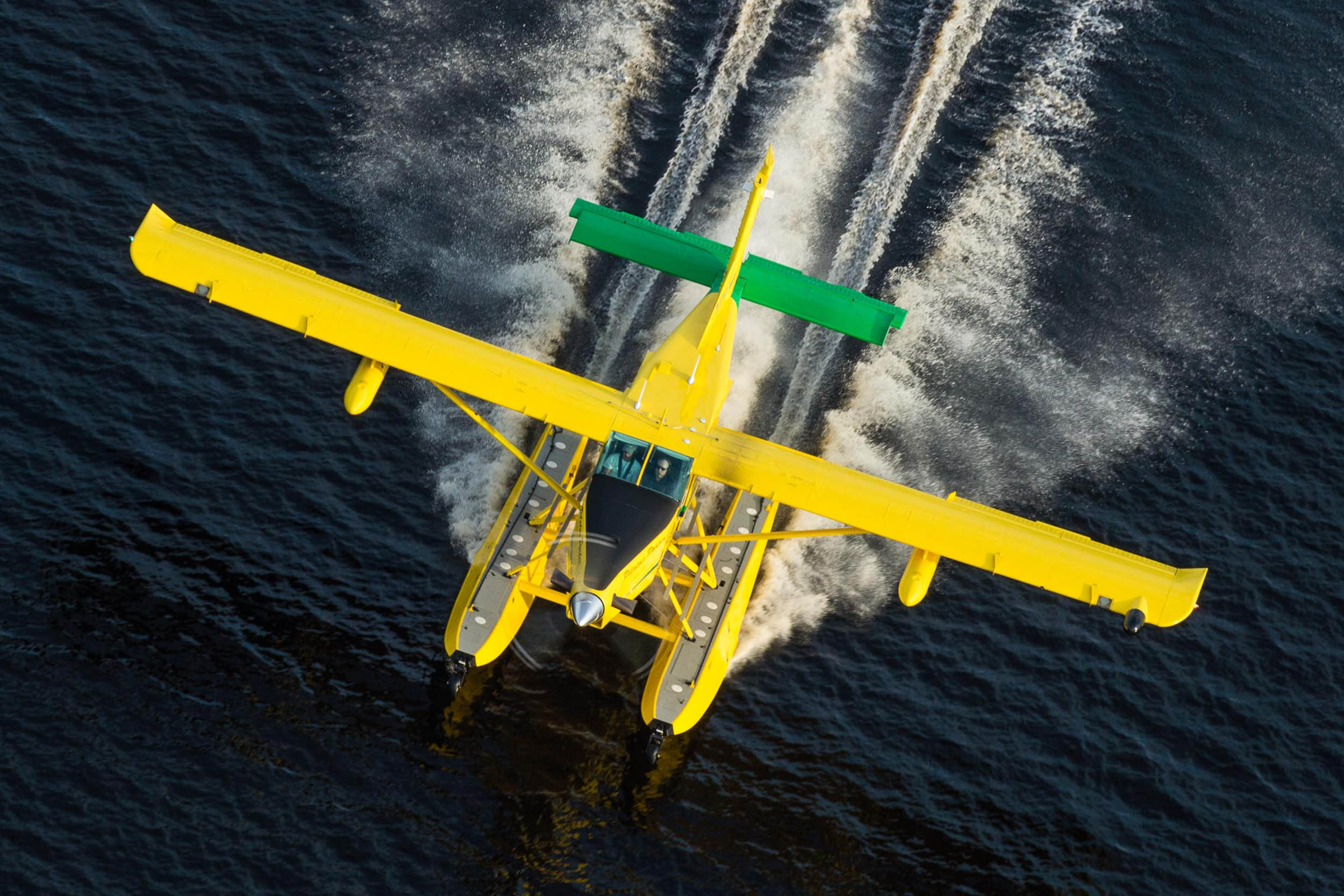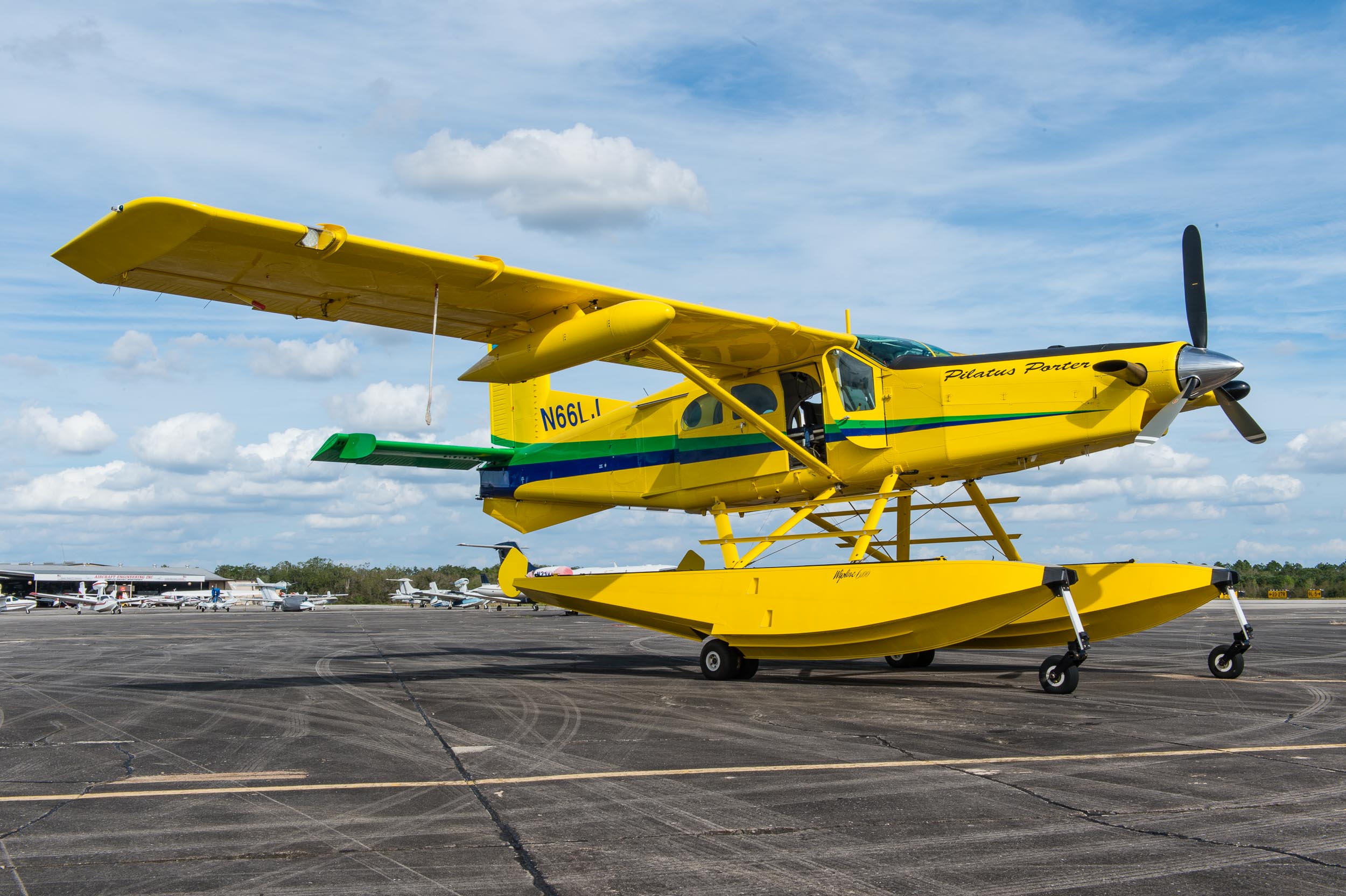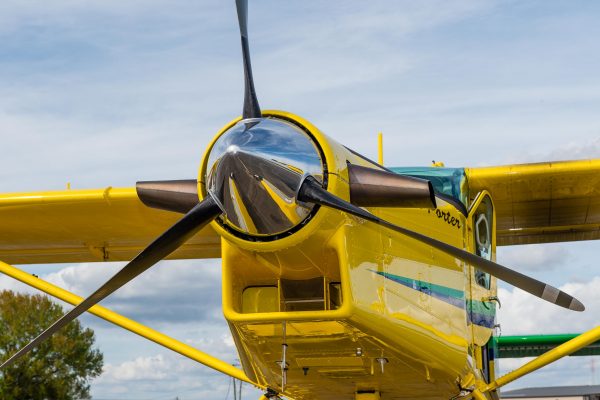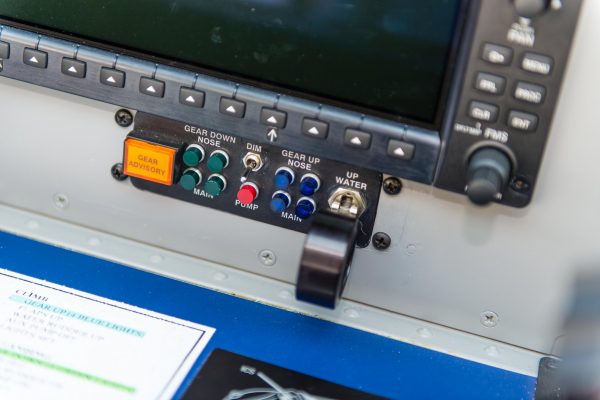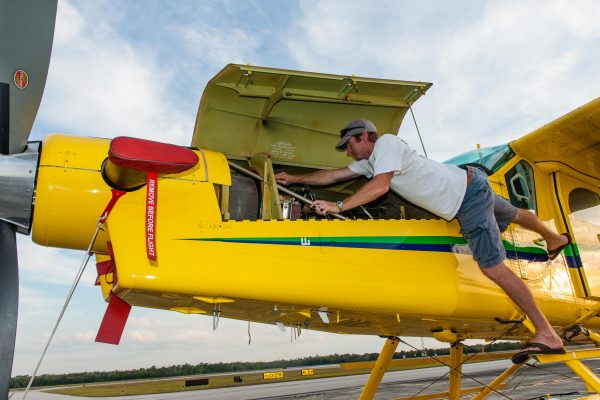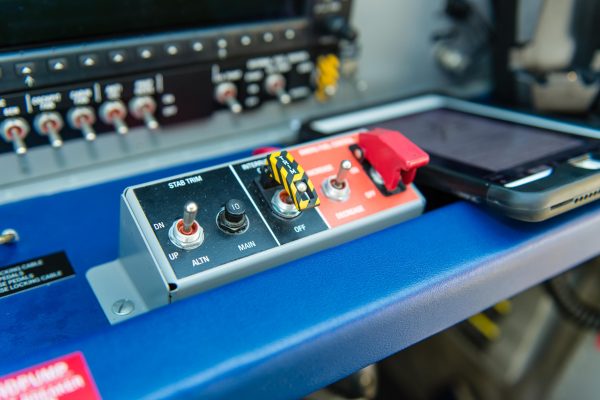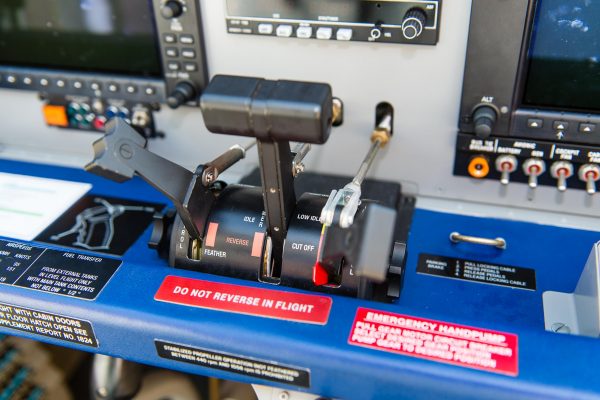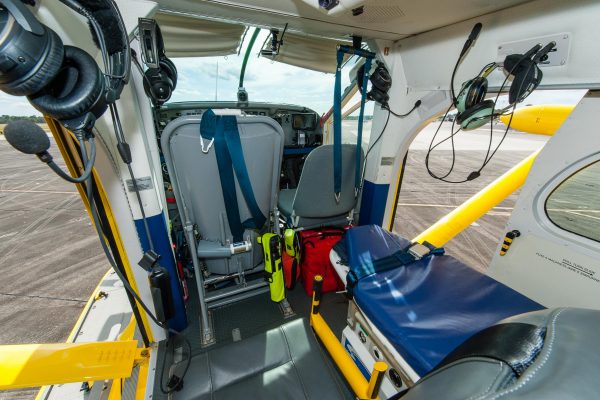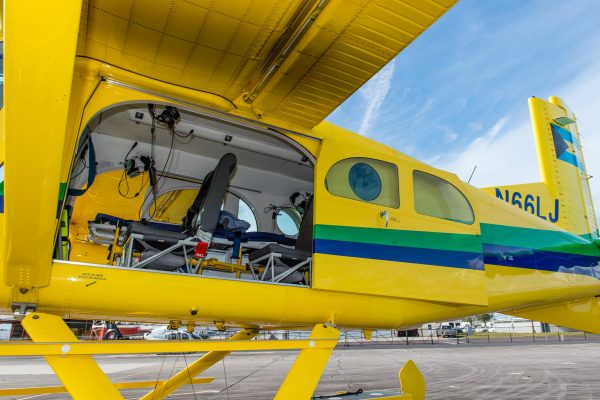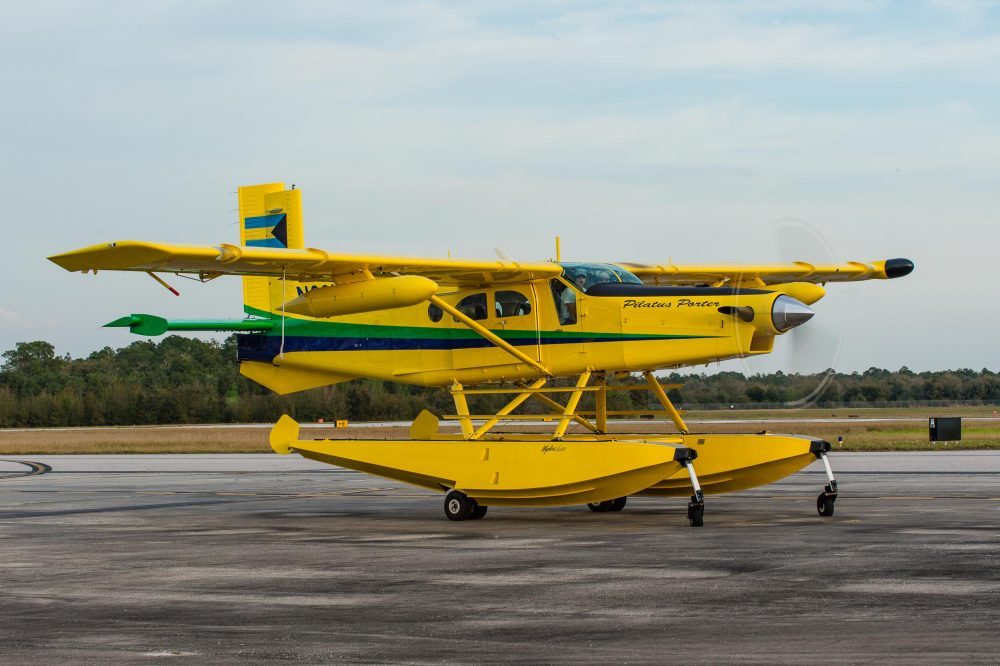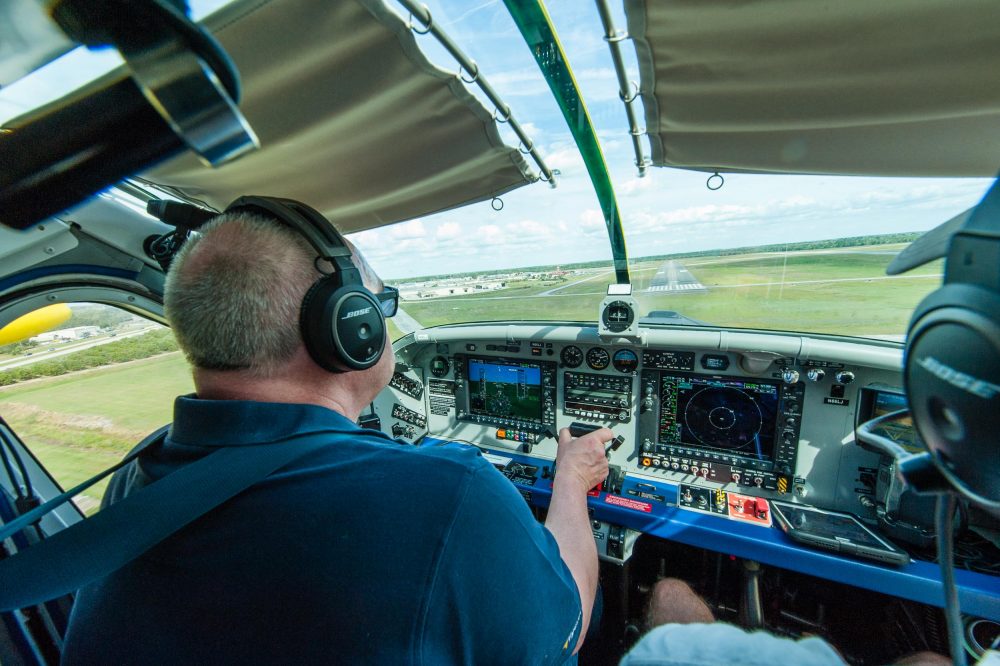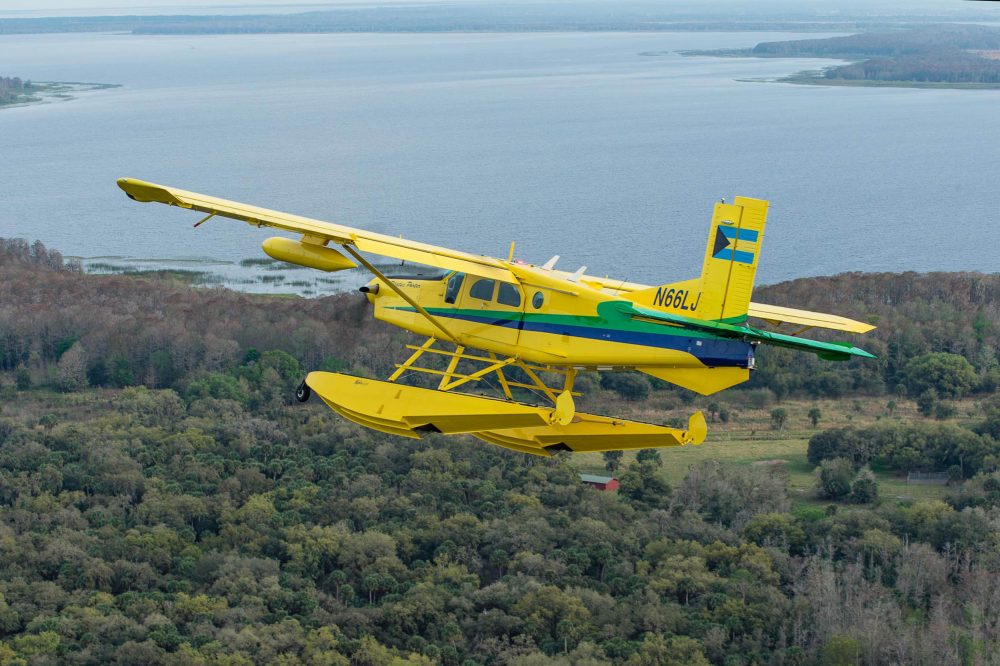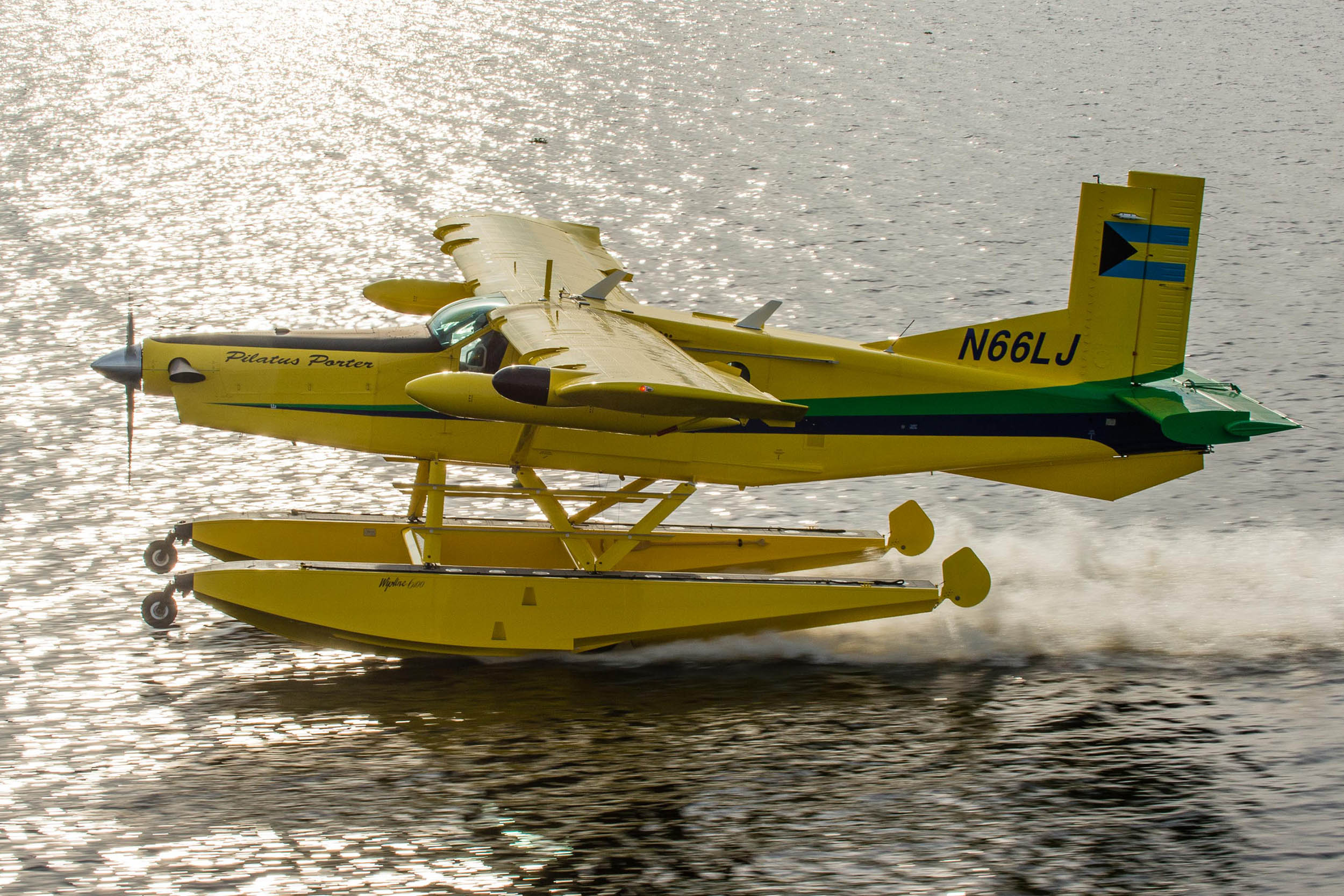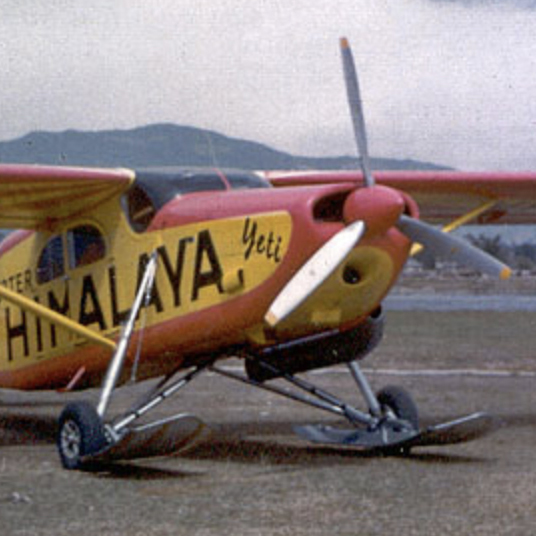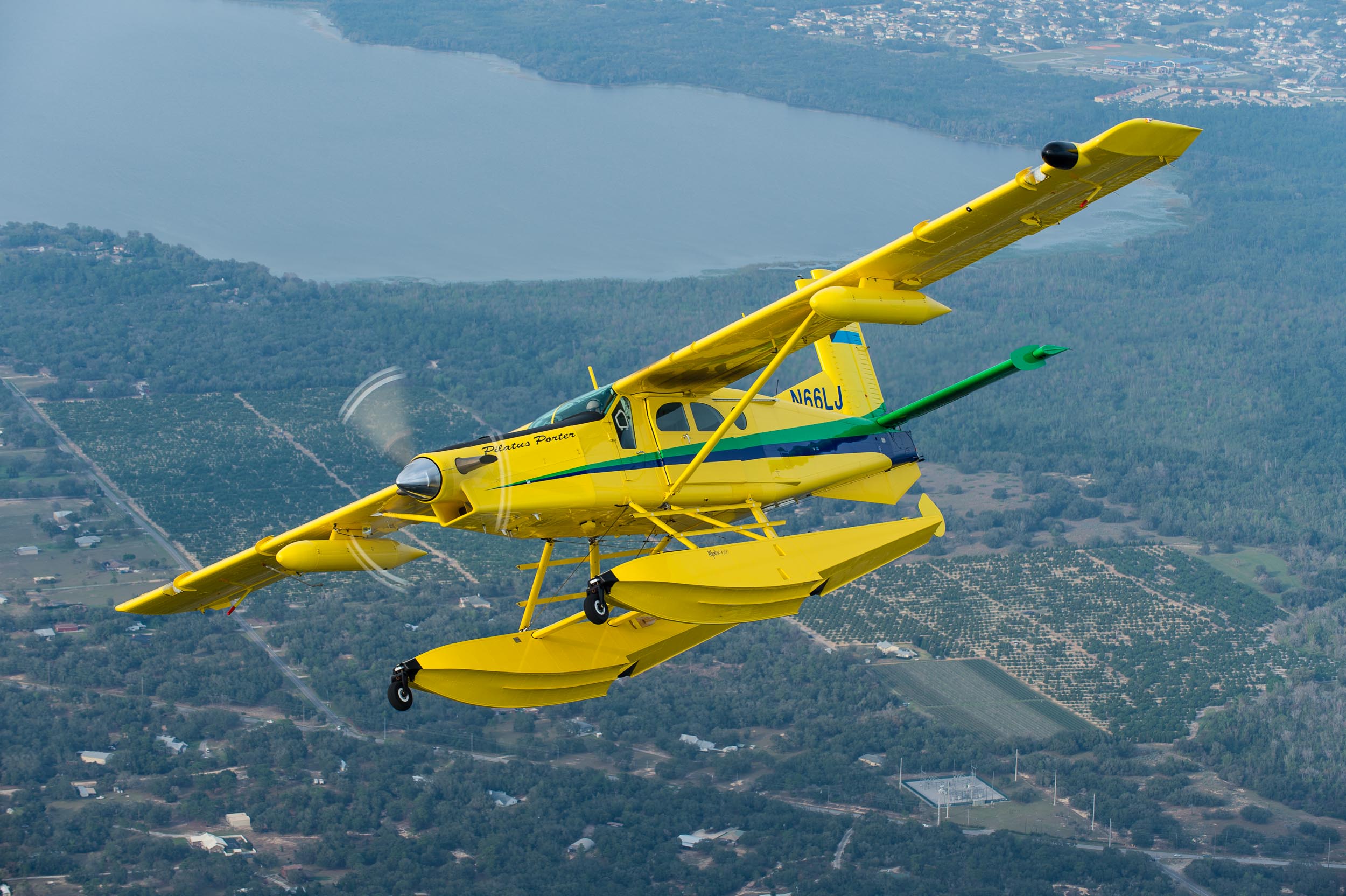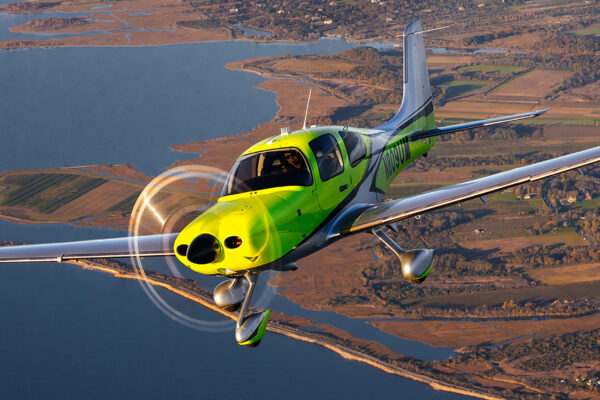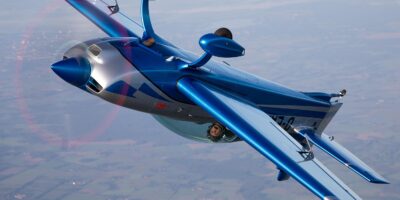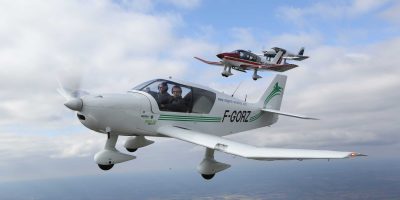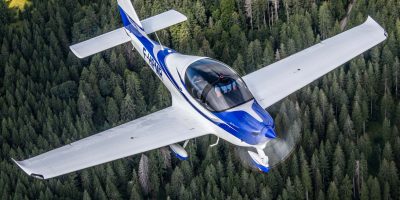You board the aeroplane by first climbing onto the floats, and as if to emphasise the height, there’s not one but two cut-outs to help you get up there. Once on the float, two more steps take you high enough to get in through the front cockpit door, or the rear sliding door. This particular Porter is equipped with a stretcher and two seats, but the configuration can be changed fairly quickly. What goes in the back and how it’s arranged is all very interesting if you’re trying to figure out how to make money from your expensive asset, but let’s face it, we’re really interested in the cockpit and going flying.
Sitting in the cockpit there’s no doubt that this is a utilitarian aeroplane. There’s no plush Alcantara, no deep pile carpets, no cup holders, what you get is what you need and not a lot more. The PC-6 is the only aeroplane I know to have what looks like a small, flat parcel shelf in front of the two cockpit seats. It’s home to the throttle quadrant, the emergency trim, pens, iPad, charging leads etc. Unusually the stick sits under this ‘shelf’ so when you’re flying, most of the time it’s out of sight, which is a bit strange. Avionics is a Garmin G950, which is basically a G1000 without the integrated GFC700 autopilot or audio panel. This aircraft also had a Bendix King ADF and a S-TEC autopilot fitted, but I managed to avoid touching either, preserving them for their overdue display in an avionics museum somewhere.
Once we’d briefed the normal stuff (such as, how to get out in a hurry, don’t fall, it will surely hurt) it was time to clear the area and get the engine started, which basically involves lighting and sustaining a fire inside the turbine engine. This is accomplished by the starter blowing large quantities of air through the engine, turning on ignitors and introducing fuel in two stages. Done correctly, and you get a self-sustaining flame surrounded by a protective sheath of air that’s ready to power your aviating dreams. Get it wrong, and you get very big invoices and maybe an email that’ll only be powering your CV writing skills. Once everything’s up and running and the prop lever is set forwards, and the fuel condition lever set to low or high idle, you’re left with just the throttle to worry about. I continue to be surprised that expensive and sophisticated engines like this aren’t FADEC controlled and therefore protected, but they’re not and it seems to work, so clearly I need to get with the plan.
Dave’s main concern was that I’d put in too much throttle and over-torque the engine (with potentially similar results to a start done wrong), so I made sure that the torque meter didn’t get close to the 47.3psi max.


